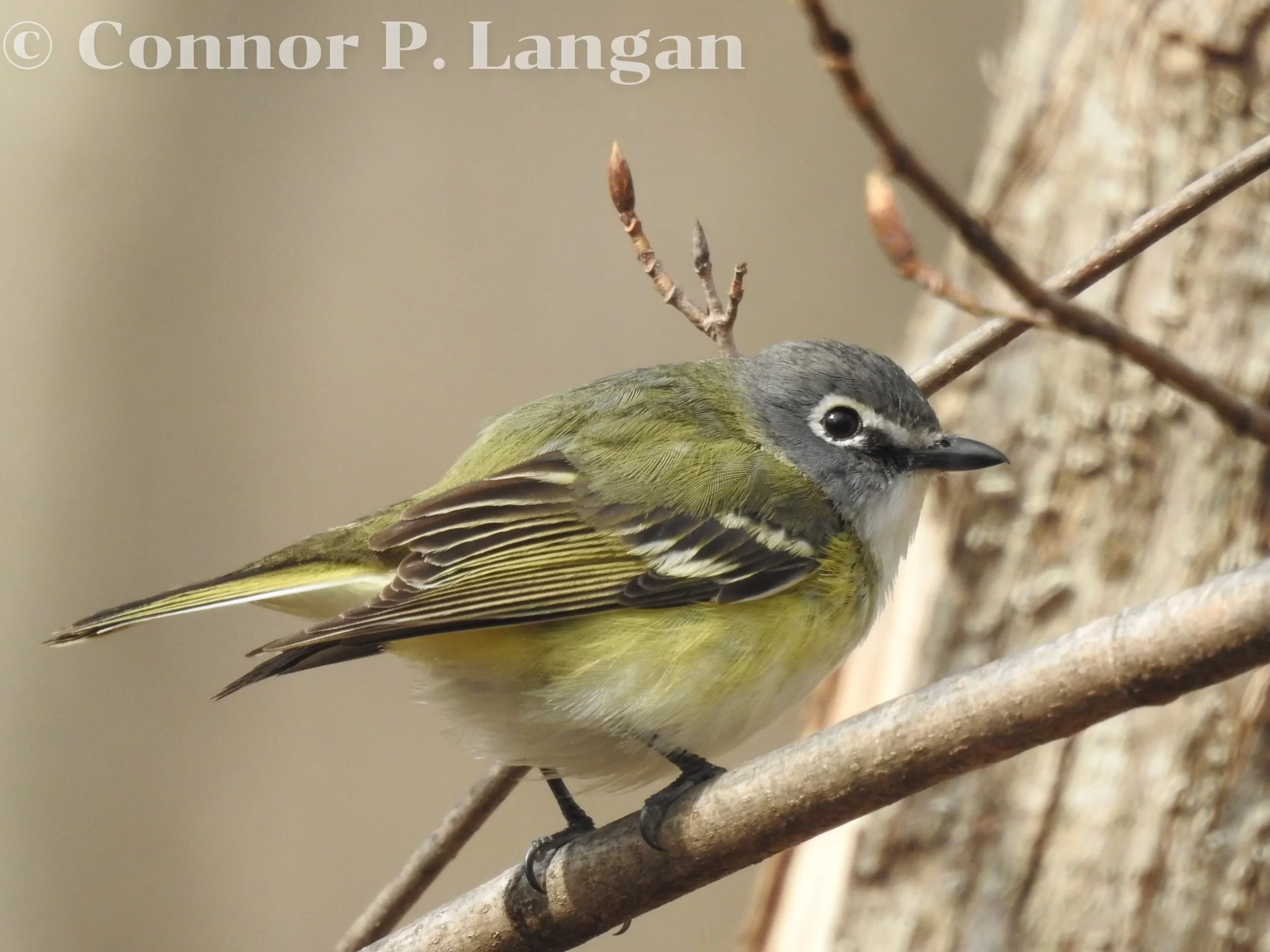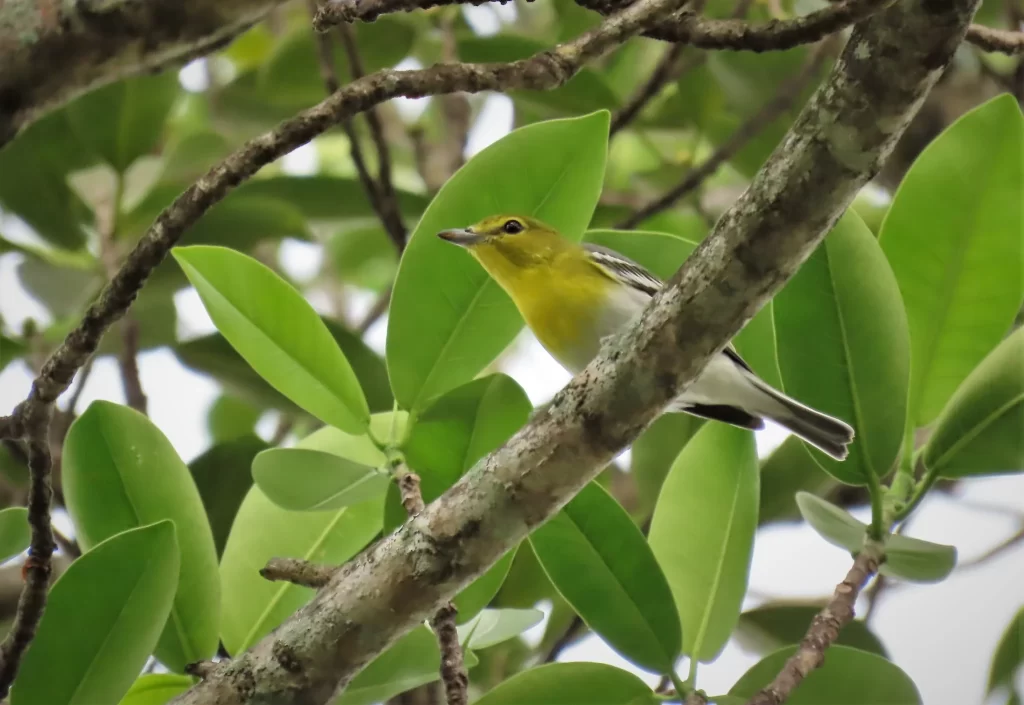Description
- Blue-headed Vireos are rotund songbirds with sturdy necks, short, thick bills, and short tails.
- These birds measure 4.75 to 6 inches in length, while they may weigh 0.5 to 0.6 ounces.
- Blue-headed Vireos are sexually monomorphic, so males and females look identical. Look for distinctive white spectacles on the blue-gray heads of these birds. Blue-headed Vireos also have green backs, green-brown flanks, white undersides, and two white wingbars.
- Immature Blue-headed Vireos look the same as adults.
Behavior
- These songbirds forage in middle to upper levels of trees where their methodical feeding style makes them difficult to spot. Rather than capture insect prey from leaves at the tips of branches, these birds tend to forage within the safety of branches hidden by foliage.
- Blue-headed Vireos pair up during the breeding season, and these birds may associate with an assortment of species in feeding flocks during migration and winter. Otherwise, Blue-headed Vireos tend to be solitary.
Diet
- Blue-headed Vireos are primarily insectivorous. These birds eat an assortment of insects, but they generally target slower-going insects instead of chasing speedy bugs. A Blue-headed Vireo may also consume fruits from plants like dogwoods and elders.
Habitat
- Blue-headed Vireos are quite adaptable across their sizable range. These birds take advantage of the lack of vireo competition in the boreal forests of northern Canada. In other parts of their range, they are comfortable breeding in both coniferous and deciduous forests.
- Blue-headed Vireos will happily breed in any forest that provides them with foliage cover and a teeming understory for foraging.
- These vireos are not picky during migration, as they may be found in shelterbelts, parks, forest tracts, and neighborhoods. Blue-headed Vireos may spend their winter in various types of rainforests, coffee or cacao plantations, or parks.
Range
- This species breeds throughout much of Canada and the Appalachian Mountain range. Blue-headed Vireos winter further north than other vireo species, being found as far north as North Carolina. These birds may winter in the American Southeast, Eastern Mexico, and Central America as far south as Costa Rica.
Breeding
- Blue-headed Vireos are monogamous by nature, and they find new mates each breeding season. These birds participate in elaborate courtship displays when pairing up for the breeding season.
- Courtship consists of a male getting into an unusual position whereby he puffs up certain feathers and retracts his head as far as possible. The male then sings while tilting his body and strutting towards a female.
- A male chooses a potential nest site for the pair. The nest construction will then begin once the nest site is approved by a female. Both males and females participate in the construction of their nests.
- A nest is situated anywhere from 5 to 15 feet up and positioned in a fork of a branch. Nesting materials such as bark, grass, leaves, feathers, and lichens are wrapped around the fork to create a foundation. A cup-shaped nest is then formed and lined with soft materials.
- Female Blue-headed Vireos tend to produce a single brood of eggs each year, with her brood containing 3 to 5 eggs. Eggs are incubated for around two weeks before hatching into nestlings. Blue-headed Vireo nestlings will fledge after just shy of two additional weeks in the nest.
Backyard Birding
- A Blue-headed Vireo will not visit a bird feeder despite attempts to lure one in with tasty morsels. Instead, backyard birders will have to try to spot this vireo as it forages in trees and shrubs.
- Blue-headed Vireos may be attracted to trees or shrubs that produce small fruits in the fall. Moreover, this species may bathe in a bird bath within a yard.
Population Status
- Blue-headed Vireos have fared well in the past few decades despite many other songbirds experiencing declines. There are presently about 13 million Blue-headed Vireos, and the populations of these birds have doubled in the past 50 years.
- Threats to Blue-headed Vireos include habitat loss, habitat disturbance during the breeding season, and climate change.


